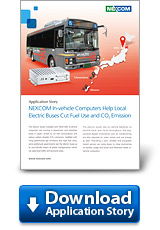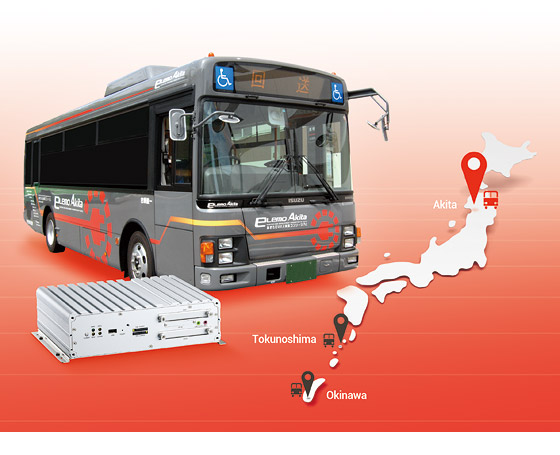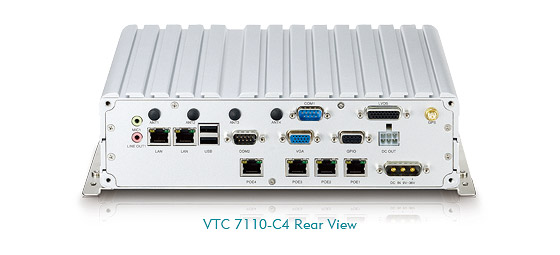NEXCOM In-vehicle Computers Help Local Electric Buses Cut Fuel Use and CO2 Emission
 The electric buses installed with NEXCOM in-vehicle computers are running in downtown and suburban areas in Japan, aimed to cut fuel consumption and reduce carbon dioxide (CO2) emissions. Saddled with rising greenhouse gas emissions and high fuel costs, some prefectural governments see the electric buses as an eco-friendly public transportation that can ease local traffic and economy woes.
The electric buses installed with NEXCOM in-vehicle computers are running in downtown and suburban areas in Japan, aimed to cut fuel consumption and reduce carbon dioxide (CO2) emissions. Saddled with rising greenhouse gas emissions and high fuel costs, some prefectural governments see the electric buses as an eco-friendly public transportation that can ease local traffic and economy woes.
The electric buses rely on pre-charged batteries to shuttle back and forth throughout the day. The less energy they use, the longer they can continue to service. Therefore, efficient energy usage is one of the most important subjects in electric bus application. The use of computer technology can greatly improve and optimize the energy usage, allowing real-time closed-loop control and monitoring of the battery and the engine, the environmental control equipment and other onboard audio and video devices.
NEXCOM in-vehicle computers VTC 7110 and VTC 1000 feature CAN bus protocol support, 3G connection, GPS tracking and navigation and powerful graphics capability. Integrated with Aptpod's telematics software, the VTC 7110 and VTC 1000 are powerful in-vehicle computing solution selected by Tokyo R&D to achieve the goal of providing a safe, reliable, enjoyable, and green transit service for its newly developed large and middle-sized electric buses.

When the electric buses are in transit, the VTC 1000 in-vehicle computers collect data from hundreds of sensors every few milliseconds (ms) and interpret the data into driving speed, bus location, battery discharge rate, battery energy level etc. The in-vehicle computers pack the interpreted data and send it to a cloud server over the air. All the vehicle data can be accessed from anywhere, anytime with a web browser and internet connection.
On buses with passenger information display systems, the VTC 7110 is used to keep passengers informed of their whereabouts, estimated arrival time at the next stop, nearby shops and point of interest, all shown on the Google Map™. Passengers are also made aware of the amount of CO2 reduced by taking electric buses.

In Okinawa, the traffic in the south continues to build up as the tourism industry steadily grows, which is a major contributing factor to greenhouse gas emission. Similarly, Tokunoshima's vehicle per capita is so high as to not only raise environmental concerns but also doom the local economy because the fuel is more expensive on outlying islands than on the mainland Japan. Meanwhile, Akita is seeking a greener alternative to help locals comfortably commute between suburbs even in cold snowy winters.
Driven by one reason or another, these prefectural governments all take the same approach to improve the situation, putting electric buses on the road.
About Tokyo R&D, please visit www.tr-d.co.jp
- Related Links:
- Urban PET Recycling Reinvented Sustainable Solutions Powered by NDiS B561
- Enhancing Logistics Efficiency with NDiS B561 Integrated Dimensioning Solution
- Browse Other News:
- Urban PET Recycling Reinvented Sustainable Solutions Powered by NDiS B561
- AIEdge-X®80 Leaps Ahead: Power Up TOPS Performance with NVIDIA® Jetson™ Super Mode
- All Case Study News
